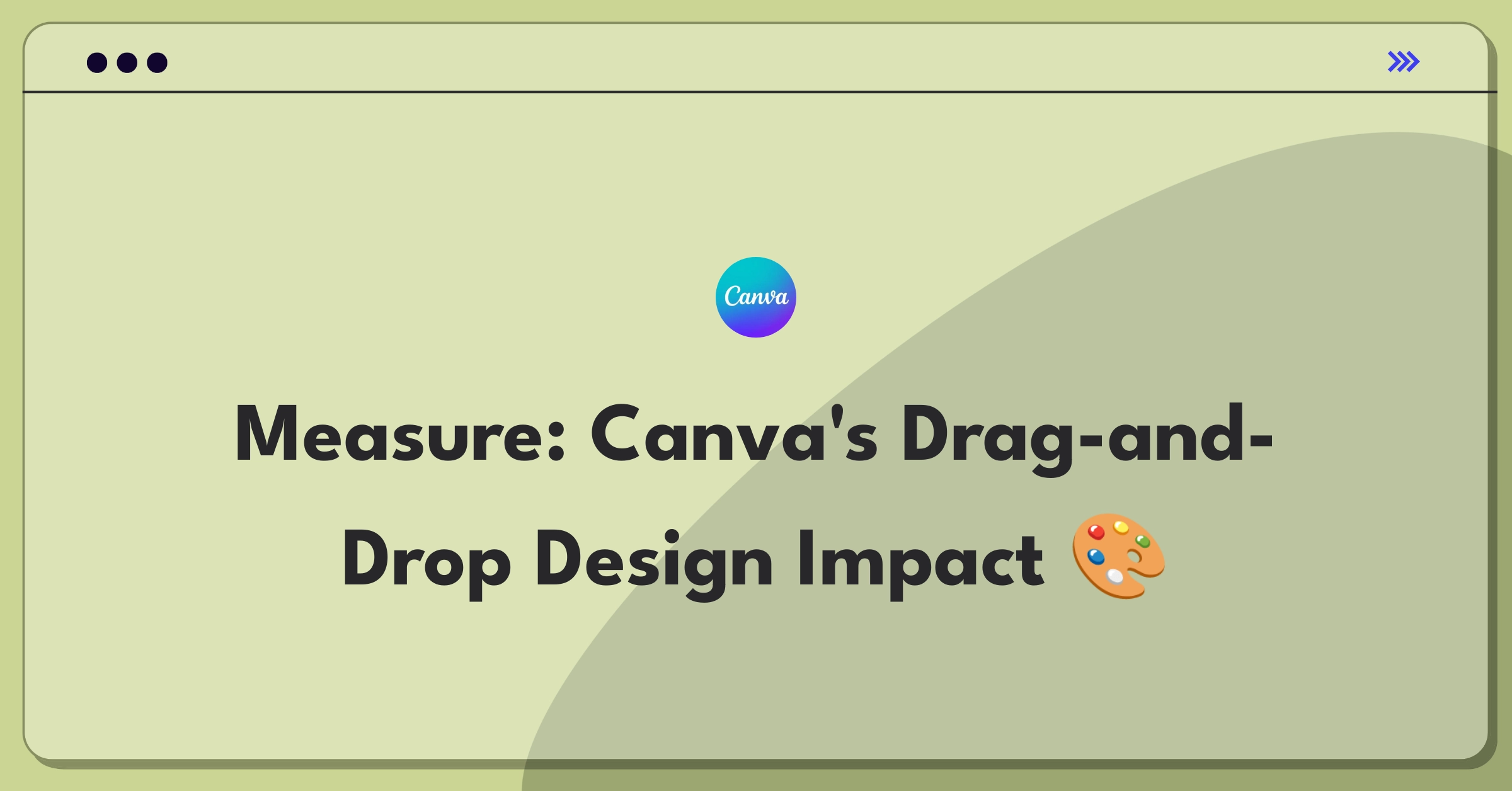Introduction
Measuring the success of Canva's drag-and-drop design interface is crucial for understanding its impact on user experience and business outcomes. To approach this product success metric problem effectively, I will follow a simple product success metric framework. I'll cover core metrics, supporting indicators, and risk factors while considering all key stakeholders.
Framework Overview
I'll follow a simple success metrics framework covering product context, success metrics hierarchy.
Step 1
Product Context
Canva's drag-and-drop design interface is a core feature of their graphic design platform, enabling users to create visual content without extensive design skills. Key stakeholders include:
- End users (individuals and businesses)
- Canva's product and engineering teams
- Canva's business leadership
- Content partners and template creators
The user flow typically involves:
- Selecting a template or starting from scratch
- Dragging elements onto the canvas
- Customizing colors, fonts, and layouts
- Adding text and images
- Downloading or sharing the final design
This interface is central to Canva's strategy of democratizing design, making it accessible to non-professionals. Compared to competitors like Adobe Creative Suite, Canva's interface prioritizes simplicity and ease of use over advanced features.
In terms of product lifecycle, the drag-and-drop interface is in the mature stage, having been a core feature since Canva's inception. However, continuous improvements and new element types keep it evolving.
Software-specific context:
- Platform: Web-based with mobile apps
- Integration points: Stock image libraries, font collections, team collaboration features
- Deployment model: Cloud-based SaaS
Subscribe to access the full answer
Monthly Plan
The perfect plan for PMs who are in the final leg of their interview preparation
$99 /month
- Access to 8,000+ PM Questions
- 10 AI resume reviews credits
- Access to company guides
- Basic email support
- Access to community Q&A
Yearly Plan
The ultimate plan for aspiring PMs, SPMs and those preparing for big-tech
$99 $33 /month
- Everything in monthly plan
- Priority queue for AI resume review
- Monthly/Weekly newsletters
- Access to premium features
- Priority response to requested question


.png)